Reinhold Forster Erbstollen
Reinhold Forster Erbstolln - Reinhold-Forster-Erbstollen
Useful Information
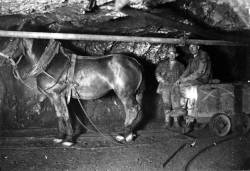

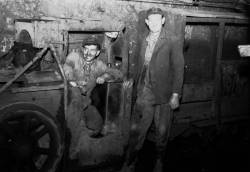
| Location: |
Reinhold-Forster-Weg, 57080 Siegen.
Eiserfeld near Siegen. (50.8331620, 7.9841417) |
| Open: |
Only after appointment. [2023] |
| Fee: |
Adults EUR 6, Children (-16) EUR 4. Base Price EUR 50. [2023] |
| Classification: |
 Iron Mine Iron Mine
 Adit Adit
|
| Light: |
 Incandescent Incandescent
|
| Dimension: | L=7,597.5 m. |
| Guided tours: | L=940 m. |
| Photography: | allowed |
| Accessibility: | yes |
| Bibliography: |
Horst G. Koch (1986):
Königin der Eisensteingruben. – Eisenzecher Zug/Reinhold-Forster-Erbstollen
Verlag Gudrun Koch, Siegen 1986. ISBN 3-7001027-2-0.

Ute Bosbach (2006): Spurensuche im Eisenland – Unterwegs auf Erzstraßen und Bergmannspfaden amadeusmedien, Nov. 2006. ISBN 3-9808936-8-5. 
|
| Address: |
Gewerkschaft Eisenzecher Zug gUG (haftungsbeschränkt), Talsbachstraße 45, 57080 Siegen-Eiserfeld.
E-mail: |
| As far as we know this information was accurate when it was published (see years in brackets), but may have changed since then. Please check rates and details directly with the companies in question if you need more recent info. |
|
History
| 21-MAR-1805 | mine opened. |
| 1837 | mine 260 m long. |
| 04-OCT-1839 | Adit in royal possession. |
| 05-NOV-1842 | Tretenbacher Gänge reached, Erbstollenrechte for the Königlichen Tiefer Reinhold Forster Erbstollen. |
| 1859 | Schlänger and Eichert reached. |
| 1864 | Scheuer reached. |
| 1868 | Grauebach reached. |
| 1883 | Kalteborner Gang reached. |
| 1865 | passes into the possession of the Eisenzecher Gruben. |
| 1902 | ore transport through the adit stopped. |
| 1944/1945 | used as air raid shelter. |
| 1977 | end of use as explosives’ storage for commercial purposes. |
| 1982 | restauration by the Eiserfelder Heimatverein. |
| 1984 | opened as a show mine. |
Geology
The Eisenzecher Böhmeler Gangzug, Eisenzecher Zug for short, runs from south of Eiserfeld to about Dernbach/Struthütten. Since this lies in the Siegerland, it is also referred to as the Siegerländer Erzrevier (Siegerland ore district). The iron ore occurs in gangues that were already mined by the Celts. These veins run vertically, and stretched over 2 km from northeast to southwest. In the central area the veins were profitable, with thicknesses between 5 m and up to 24 m. However, this was only in the central part of each gangue for a length of about 150 to 250 m.
The Eisenzecher Zug is the type locality for the mineral lepidocrocite (also ruby mica), a rather rarely occurring mineral of iron(III) hydroxide oxide.
Description
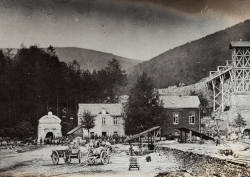

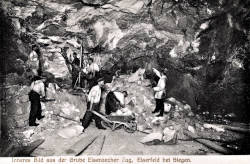
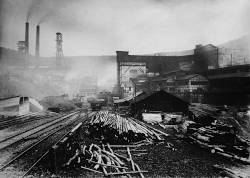
The Reinhold Forster Erbstollen is the adit of the Eisenzecher Zug, started on 21-MAR-1805, in order to drain the Tretenbacher Gänge mines, i.e. the mines Eisenzeche, Kirschenbaum, Schlänger & Eichert, Scheuer, Kalteborn and others. It was named after the naturalist and geologist Johann Reinhold Forster. An average of 8 miners drove the adit at a daily advance of 3-5 cm, later up to 15 cm. The gallery passed into royal ownership in 1839, and in 1865 it became the property of the Eisenzecher Gruben. With a length of 7,597.5 m including side passages, this is one of the longest adits in North Rhine-Westphalia. During construction, several hundred tons of iron ore and small amounts of copper ore were also extracted.
The adit was intended to drain the various mines in the district, but since this is achieved simply by the gradient, i.e. by gravity, it is free of charge for the time being. This saves a considerable amount of effort in pumping the mines. However, the construction of such a drainage gallery also requires a considerable amount of time and money. In return, the owner is later well compensated by the mine owners for its use. All these regulations are, of course, laid down in mining law. Thus, when the Tretenbach tunnels were reached in 1842, the adit received Erbstollenrechte (lit. adit rights). This means that it actually drains a mine and that payment by the mine owner is legally guaranteed.
After a construction period of just over 60 years, the adit drained the Eisenzecher Zug iron mines for about 40 years, and in principle still does so today. However, although it successfully drained various mines, it was, at least in part, a failure. Technical developments in shaft construction progressed faster than the driving of the adit. Thus, although various mines were drained, the connection of some more distant pits was abandoned because they were already mining below the level of the adit. In addition to draining water, it was also used to extract iron ore, which was very effectively brought to the surface "downhill" by the mine train. After the modern surface facilities at the two machine shafts were connected to the Eisern-Siegen railroad line, mining through the Erbstollen ceased in 1902.
During World War II, it was converted into an air raid shelter, at least the front section. After the war, it was used as an explosives storage facility for commercial purposes until 1977. The area surrounding the tunnel entrance was originally a conveyor for the mined iron ore. After the closure, the area was developed with residential houses, so that today the adit is located in a residential area.
In 1879, the ornamental gallery portal was built, which has become a landmark for the former iron ore mining. The show mine on the first 350 m reminds of the iron ore mining. You can see ore mines, learn about the tools, and the mining and extraction methods of the old miners. There is a mineral collection in the former underground horse stable. In addition, films from the old and new times are shown.
- See also
 Search DuckDuckGo for "Reinhold Forster Erbstollen"
Search DuckDuckGo for "Reinhold Forster Erbstollen" Google Earth Placemark
Google Earth Placemark Reinhold Forster Erbstollen
Reinhold Forster Erbstollen  - Wikipedia
- Wikipedia Eisenzecher Zug - Wikipedia (visited: 15-AUG-2023)
Eisenzecher Zug - Wikipedia (visited: 15-AUG-2023) Das Besucherbergwerk Reinhold Forster Erbstolln
Das Besucherbergwerk Reinhold Forster Erbstolln  (visited: 08-AUG-2023)
(visited: 08-AUG-2023) Reinhold Forster Erbstollen - Mineralienatlas (visited: 15-AUG-2023)
Reinhold Forster Erbstollen - Mineralienatlas (visited: 15-AUG-2023)
 Index
Index Topics
Topics Hierarchical
Hierarchical Countries
Countries Maps
Maps